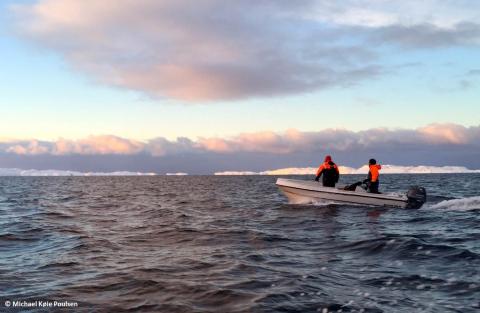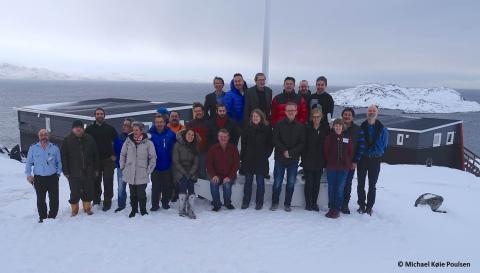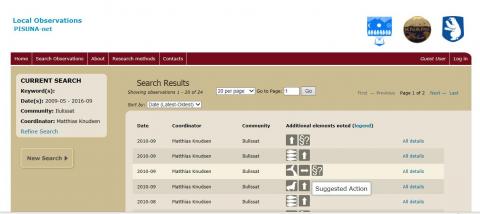- Français
- English
From Community-Based Monitoring to Management: The PISUNA Approach

From the 6th to the 7th December 2016 the PISUNA project - funded by the European Commission’s BEST Initiative – gathered together Greenlandic stakeholders and international experts in Nuuk to discuss and share experiences and lessons-learnt during the project, as well as from other community-based monitoring initiatives in the Arctic.
Indigenous peoples in the Arctic depend on the living resources for their livelihood. They have long established practices for observing the environment. Knowledge has sometimes been accumulated in communities over many years and has been passed down from generation to generation. Experienced fishers and hunters often have a fine-scale and intimate understanding of the local environment, and an appreciation of subtle but important changes. However, the integration of indigenous knowledge into current management regimes remains a challenge. Given the rapid environmental changes being experienced in the region, the proper recognition and integration of this knowledge can help to both improve management actions and to assess whether such actions are having the desired impact.

There is no single accepted definition of community-based monitoring; the concept incorporates a spectrum of approaches that are led by communities and involve their participation, to a greater or lesser extent, in monitoring environmental or other phenomena. Sometimes these approaches fail to go beyond the involvement of communities in collecting data and do not engage them in interpreting their observations and formulating management responses, thereby not benefiting fully from their knowledge.
PISUNA aimed to improve the management of resources in Greenland by establishing a process for indigenous knowledge and environmental observations to be integrated into decision-making for natural resources. The process is locally-led; Local Resource Councils, established at the community level and comprising hunters, fishers and other individuals with an interest in the environment, decide what will be monitored based on the relevance for their community. Monitoring by the PISUNA pilot communities primarily focused on terrestrial and marine mammals, fish, and birds, but also included abiotic factors such as sea ice cover. Every three months the observations and interpretations of each attribute are collated and discussed by the Local Resource Council, including the trend of a particular resource compared to the previous year (e.g. increasing, no change, decreasing) and the recommended management actions on the basis of the observations. Suggested management actions have included changes to hunting and fishing seasons for certain species, changes to quotas and amendments to local laws and bylaws such as imposing restrictions on fishing methods and allowable equipment. This information is submitted to the local authority to take action or to pass on to the central government, depending on the appropriate decision-making level. The observations made by the local communities are stored in a web-based application - PISUNA-net where they are publicly available and can be searched.
PISUNA-net Screenshot, developed by PISUNA in cooperation with ELOKA and University of Alaska Fairbanks
Community-based monitoring approaches can realise various benefits through cross-fertilizing scientific and indigenous knowledge to increase capacity for resource management, to support sound adaptive management and can achieve data collection over a wide area and on a continual basis which is impossible through conventional scientific monitoring.
The success of the approach piloted by PISUNA is attributed to several factors, including:
- a supportive policy environment – the Parliament Act No. 12 Of 29 October 1999 On Fishing And Hunting emphasises the inclusion of hunters’ and local users’ knowledge in government decision-making;
- cohesion within the pilot communities;
- the community driven approach whereby, for instance, the resources observed are those selected by the communities themselves rather than being imposed externally;
- the establishment by the Ministry of Fisheries and Hunting of a common understanding across all the key stakeholders as to how the documented observations and management recommendations would be utilised in the decision-making process. This ensured that from the outset expectations among the various parties were realistic and based on a shared understanding.
Other projects in the Arctic have already adopted aspects of PISUNA successfully, thereby demonstrating the wider value of the project’s work. For example in Finland, as part of a co-management project, the indigenous Skolt Saami used the PISUNA process and summary form for documenting changes in living resources within the Näätämö river basin.
PISUNA showcases the multiple-benefits of cross-weaving indigenous and scientific knowledge and corroborates studies highlighting their complementarity and the accordance between them. Recognising their intrinsic differences can enable the wealth and value of traditional knowledge to be integrated into decision-making processes alongside and on an equal footing to scientific knowledge, facilitating locally meaningful management decisions that have a high likelihood of having a sustained impact.



